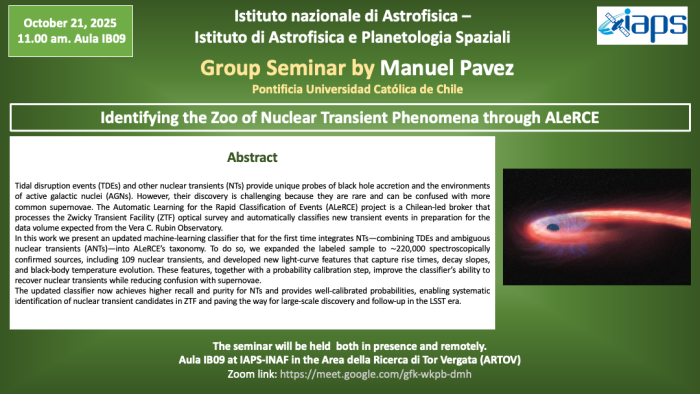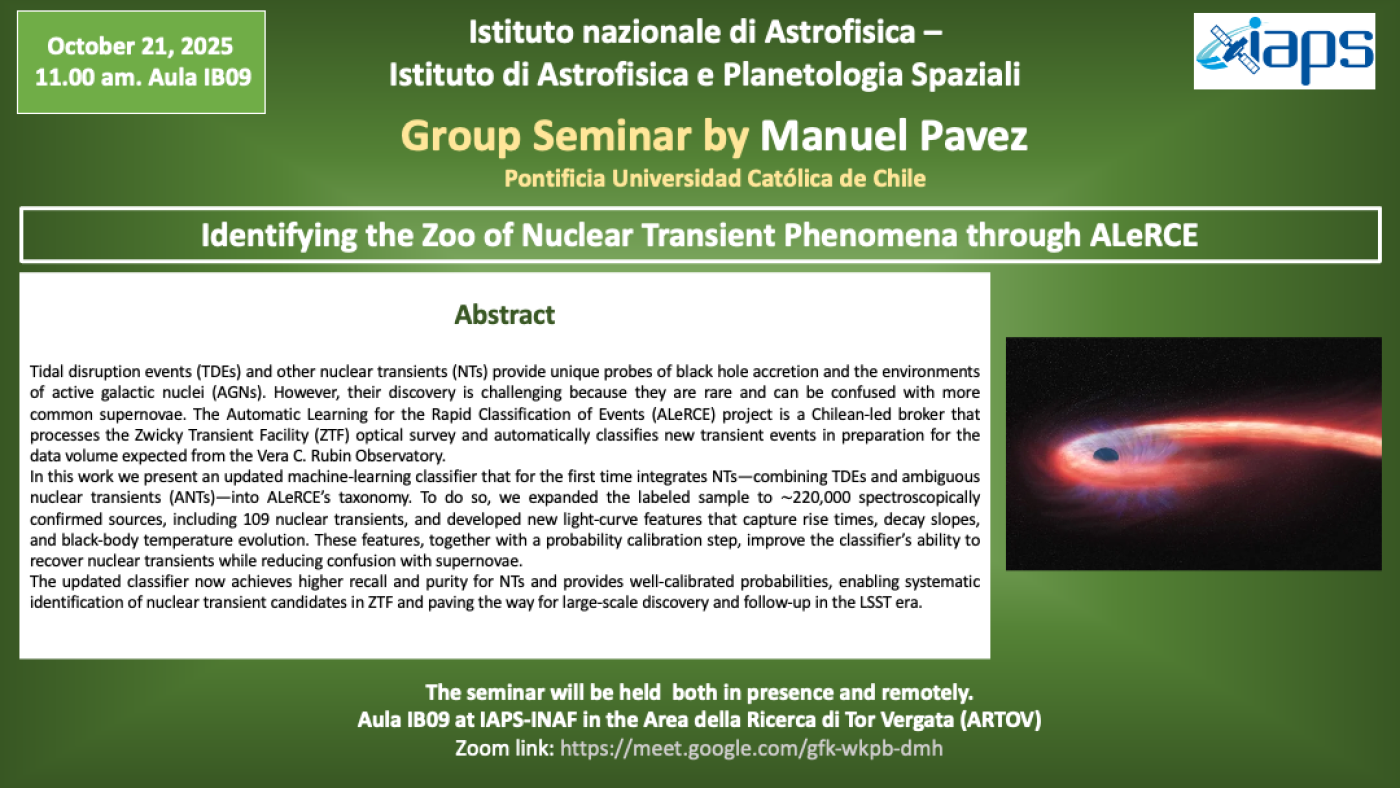Identifying the Zoo of Nuclear Transient Phenomena through ALeRCE
Affiliation: Pontificia Universidad Católica de Chile

Abstract:
Tidal disruption events (TDEs) and other nuclear transients (NTs) provide unique probes of black hole accretion and the environments of active galactic nuclei (AGNs). However, their discovery is challenging because they are rare and can be confused with more common supernovae. The Automatic Learning for the Rapid Classification of Events (ALeRCE) project is a Chilean-led broker that processes the Zwicky Transient Facility (ZTF) optical survey and automatically classifies new transient events in preparation for the data volume expected from the Vera C. Rubin Observatory.
In this work we present an updated machine-learning classifier that for the first time integrates NTs—combining TDEs and ambiguous nuclear transients (ANTs)—into ALeRCE’s taxonomy. To do so, we expanded the labeled sample to ∼220,000 spectroscopically confirmed sources, including 109 nuclear transients, and developed new light-curve features that capture rise times, decay slopes, and black-body temperature evolution. These features, together with a probability calibration step, improve the classifier’s ability to recover nuclear transients while reducing confusion with supernovae.
The updated classifier now achieves higher recall and purity for NTs and provides well-calibrated probabilities, enabling systematic identification of nuclear transient candidates in ZTF and paving the way for large-scale discovery and follow-up in the LSST era.


